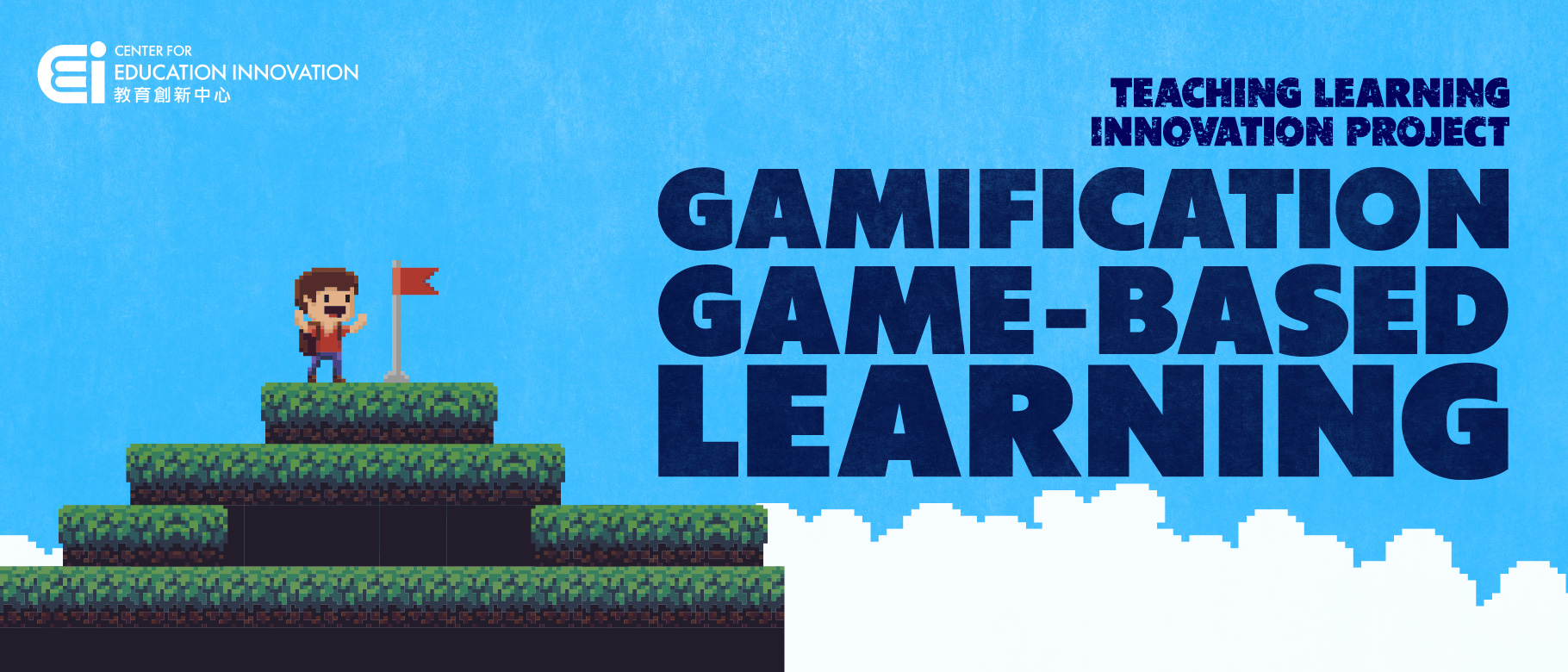
The Center for Education and Innovation is committed to supporting the use of gamification and game-based learning at The University of Hong Kong Science and Technology. ‘Play’ is a powerful tool for cultivating an engaging and dynamic classroom.
What is gamification and what is game-based learning?
These terms can sometimes be confused with one another but there are clear distinctions between the two. They both have different roles to play in learning.

What is gamification?
Gamification involves adding game elements to existing materials or learning outcomes. For example, implementing a points system or story/mission element into a lesson.
Why use gamification?
- Gamification has been shown to increase learners’ motivation
- Gamification has the potential to improve knowledge retention
- Gamification enhances student engagement through mechanisms like badges, points, or leaderboards
When to use it?
- Gamification is a great tool for memory-based learning subjects and material (e.g., language-learning, mathematic formulas etc.)
- You can use gamification to cut dense learning content into more manageable chunks or subunits

What is Game-based learning?
Game-based learning involves embedding learning outcomes and content into a game that students play. Students also obtain determined skills and knowledge from engaging with the game.
Why use game-based learning?
- Game-based design increases learners’ creativity and critical thinking
- Game-based design is highly motivational for as students have a ‘stake’ as competitors
- Game-based design helps develop students’ problem-solving abilities and critical thinking skills
When to use it?
- Game-based learning is a great tool for learning that may involve complex material and problem solving.
- Game-based learning is also effective when paired with learning about real-world scenarios, issues, and experiences
How can I use gamification and game-based learning?
Researcher Dr. Nick Yee proposed elements of what motivates gamers and what will subsequently motivate your students:
- Action (e.g. objectives)
- Social (e.g. competition, teams)
- Mastery (e.g. scoring/leaderboards)
- Achievement (e.g. awards or rewards)
- Immersion (e.g. roleplaying, AR/VR)
- Creativity (e.g. customization, design)
These elements can be implemented across both gamification and game-based learning courses and lessons. Below are some concrete examples to help guide you.

To achieve this, consider using hands-on activities such as roleplaying, create narratives and opportunities for student choice, and even utilize mediums such as AR/VR where appropriate.
What are examples of game-based learning?

Gamification
Dr. Cindy Lam (Department of Ocean Science) has successfully implemented gamification in a Teaching and Learning Innovative Project (TLIP). With the support of CEI, Dr. Lam has developed an app for her students where they undertake quests on an island with a dedicated marine laboratory. To unlock lab sessions, users must gain experience by engaging in topic-related missions and quizzes whilst exploring the island.This example demonstrates how gamification can help transform broad content into manageable chunks and how gamification can make memorization of knowledge immersive and interesting for learners.

Game-based Learning
Dr. Meike Sauerwein (Division of Environment and Sustainability) successfully implemented game-based learning in a Teaching and Learning Innovative Project (TLIP). To help students better understand the complexities of sustainability, they worked in groups as owners of a milk company. They had to compete for resources and collaborate to maximize their revenues and minimize the environmental costs of their decisions.This example demonstrates how game-based learning can help students learn problem-solving and creativity skills from real-world scenarios, assuming other identities, and responding to failure.

Do you think you can determine between gamification and game-based learning?
If you are interested in using gamification or game-based learning in your courses or in a project – reach out to the Center for Education and Innovation for support.

